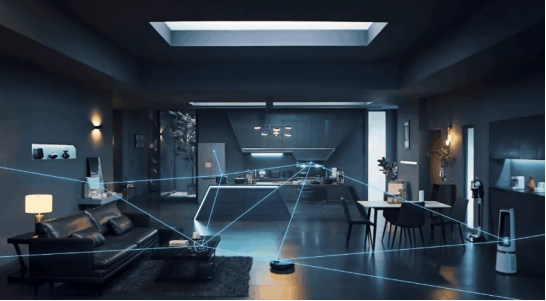
Welcome to the WeChat subscription number of “Sina Technology”: techsina
Text/Aerospace
Source: One DU Finance (ID: yiducaijing2021)
In today’s rapidly changing technology, “lazy house” is no longer a derogatory term. Smart homes have entered the life of the post-80s and 90s, and young people’s smart life in the family scene has the possibility of extreme humanization.
Smart audio and video, smart lighting, smart security… Smart home products emerge in an endless stream, and behind consumers paying the bills one after another, is the gradual favor of the capital market.
In October 2021, Aqara completed a C round of financing of 1 billion yuan; at the beginning of 2022, Ou Ruibo completed a new round of financing with a total amount of 1 billion yuan, and investors include Tencent, Huaxing New Economy Fund, Sofia, Fusenmei, etc.; The smart door lock brand Kaadas has completed the 600 million C round of financing led by Asian Investment Fund, Cornerstone Capital, Tongchuang Weiye, Yijian Capital, etc…
Of course, not only players in the vertical field are making efforts, but also Internet and home furnishing companies have dived into the blue ocean market of smart home to test the water.
Yiou think tank calculates with reference to Statista data, the market size of China’s smart home industry in 2020 is about 435.4 billion yuan, and it is expected to exceed 800 billion yuan in 2025. The huge market space makes smart home increasingly an important engine for the growth of the smart market.
01
3D Upgrade Drives Smart Home Growth
According to the “Quarterly Tracking Report on China’s Smart Home Equipment Market” released by IDC, in the first half of 2021, China’s smart home equipment market shipped about 100 million units, a year-on-year increase of 13.7%; it is expected that China’s smart home equipment market shipments will be Continuing to grow at a compound growth rate of 21.4%, the market shipments will be close to 540 million units in 2025.
The upgrade of policy support, consumption trends, and living standards has created favorable conditions for the development of a new blue ocean for smart homes.
From a policy perspective, smart home, as one of the key applications of the Internet of Things, has been encouraged and supported, and the introduction of a series of policies has provided a good soil for its development.
In 2021, the Ministry of Housing and Urban-Rural Development, together with 16 departments, jointly issued the “Guiding Opinions on Accelerating the Development of Digital Homes and Improving Living Quality”, proposing to build a relatively complete digital home standard system by the end of 2025, fully equipped with communication connection capabilities, and possessing the necessary intelligence product. In April of this year, the “Opinions on Accelerating the Construction of a National Unified Market” was officially released, which clearly proposed to “promote the unification of standards in the fields of smart home and security, and explore the establishment of a smart device identification system.”
From the perspective of consumption trends, the consumption of smart products has become a driving force for young people to upgrade their consumption. At this stage, the main consumption force in my country is composed of “post-80s” and “post-90s”. Their consumption concepts are more fashionable and their acceptance of smart products is higher. According to public data, the contribution rate of “post-90s” smart home purchases has exceeded 20%. More and more companies analyze the consumption psychology and purchasing standards of young people, and develop smart home products in a targeted manner.
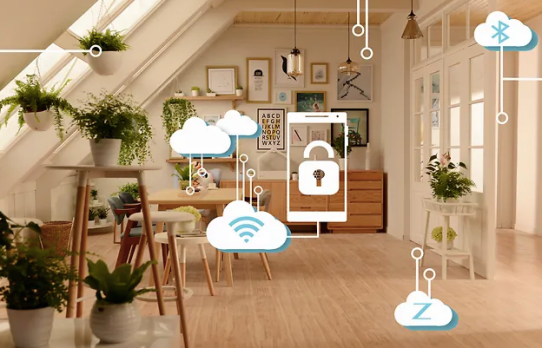
At the same time, with the continuous improvement of people’s living standards, the concept of “technology changes life” has become more and more popular. Just imagine when people see Tony Stark, the protagonist of the “Iron Man” movie, when he comes home, he whispers “I want to drink coffee”, and the coffee machine starts to make coffee. How can young people not be tempted by such a ritual-filled life scene?
The improvement of living standards has spawned people’s pursuit of life aesthetics, and also promoted the increasing consumer demand for smart homes. As Zou Chunhui, a well-known hotel designer in China and founder of CHD Hong Kong Zou Chunhui Design Office, said in the Huawei Designer Salon, today’s space intelligence is helping space aesthetics and providing unprecedented space changes in everyone’s life. , which is the fusion of space and intelligence, which also brings a sense of ritual and convenience to life.
02
Giants end, heavyweight players who stir the blue ocean market
The blue ocean of smart home is in sight, and many home appliances, technology companies and smart home companies have come to an end one after another, accelerating the construction of smart ecosystems. According to Tianyancha data, as of December 24, the total number of smart home companies in my country will reach 646,916 in 2021, and 177,907 will be added in 2021 alone, accounting for 27.5%.
Among them, the three camps occupy the mainstream in the smart home track. One is the traditional home appliance companies represented by Haier, Midea, and Gree, the second is the technology companies represented by Huawei, Xiaomi, and Lenovo, and the third is smart home startups represented by Tuya Smart, Ou Ruibo and Aqara.
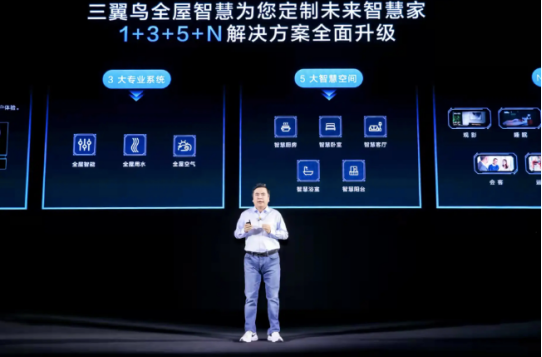
At present, the mainstream domestic smart home brands are mainly based on wireless connection. Huawei, Aqara Green Rice, and Ou Ruibo can all be customized for customers, which are suitable for middle-to-high consumer groups who want to create an integrated whole-house smart home; Xiaomi, Tuya Smart With a single product as the core, consumers can DIY a set of smart home products suitable for themselves according to their personal needs, which is suitable for groups with strong hands-on ability and pursuit of cost-effectiveness.
Home appliance companies aiming at the smart home market choose to be based on the whole series of high-end and smart home appliances. For example, the scene ecological brand Tri-wing Bird launched by Haier Smart Home in 2020 provides users with customized solutions for home scenarios such as smart kitchens, smart bedrooms, and smart living rooms, allowing users to realize the smart interconnection of major appliances and daily consumption. In the smart kitchen it builds, consumers can get tailor-made healthy recipes, and place orders to buy ingredients with one click, to maximize value expansion in smart scenarios.
With the ever-expanding blue ocean territory of the smart home market, the industry has more discussions on the future trend of product ecology. Usually, we divide the development of China’s smart home market into four stages: network connection, scenario-based, perceptual and autonomous. Today, the product layout of more companies is advancing in the latter two stages.
Huawei’s philosophy is to build a smart world where everything is interconnected. The pre-installation of its smart home is to build an ecosystem with the HiLink platform as the core, and the central control screen + Huawei Smart Life App as an interactive medium to integrate the smart devices in the whole house in an orderly manner. “Whole House Intelligence”.
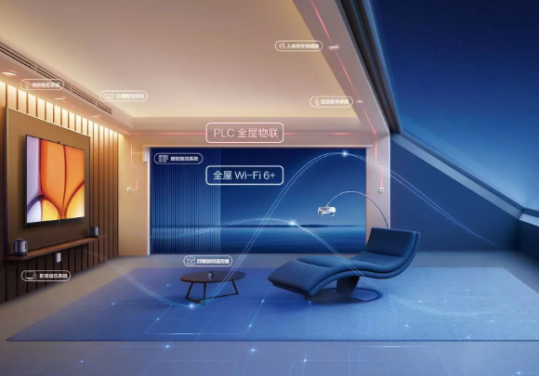
As Shao Yang, Chief Strategy Officer of Huawei Terminal BG and President of Whole House Smart Product Line, once shared: Whole house intelligence is not the mechanical addition of all smart devices. The ideal whole house intelligence is to make the space as a whole intelligent.
“Let the space welcome people, regardless of who enters the space, but the space itself is ready to welcome people”, the essence of the whole house intelligence is actually the space interaction revolution. The function of the future home will be extended from a single residence to multiple attributes such as entertainment, office, and learning, which requires the realization of whole-house networking, centralized space control, natural interaction and system linkage.
The relevant person in charge of Aqara Green Rice also mentioned that the ultimate form of smart home is “active smart home”. At present, Aqara Green Rice is also moving towards “non-sensing active service” and “silent intelligent experience”. For example, the previously upgraded Aqara Home App 3.0 can generate matching automation scenarios for the Aqara smart items added by users according to the user’s life trajectory. Through learning, knowing when users go home every day, Aqara Home App 3.0 will link the products in the home to realize integrated scenes such as automatic lighting, turning on the air conditioner for ventilation or air-conditioning output, and playing music while opening and closing the curtains.
03
“Spatial intelligence” still has a long way to go
In 1997, Bill Gates’ home on Lake Washington was finally completed after seven years. This house is completely built according to the concept of smart house, there is a high-performance server as the background to manage the whole system, all the doors, windows, lamps and electrical appliances can be controlled by computer.
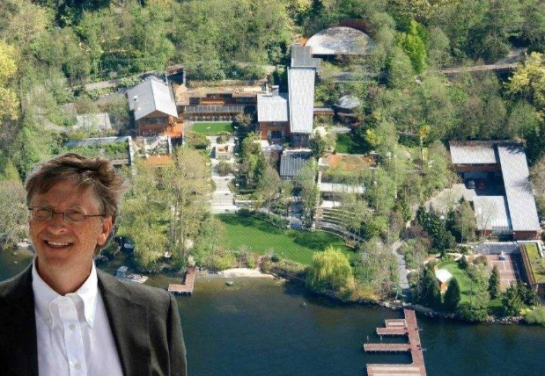
Today, 25 years later, tens of millions of ordinary people have enjoyed the “tech dividend” in the rapid localization of smart homes. Through smart home products, they have narrowed the distance with the rich and enjoyed a high-quality smart life. But looking to the future, the “comprehensive spatial intelligence” pursued by my country’s smart home companies still has a long way to go.
First of all, the consumer’s awareness and purchasing power of smart homes are relatively elementary, and there is still much room for improvement in after-sales service. Aiming at the pain points of smart users in the whole house, iResearch mentioned that consumers are affected by information asymmetry and scattered purchasing channels in the early selection stage, and face problems such as opaque prices and difficulties in connecting multi-brand single products; Some manufacturers lack standardized after-sales service teams, which leads to problems such as arbitrary charges and insufficient service, and also affects the experience and reputation of consumers.
Secondly, the product control center of almost all smart home camps still relies on mobile phones, central control screens, and smart speakers, which does not substantially improve the active interactive experience. Relying on consumer settings and controls to achieve intelligent linkage, rather than “active perception and interaction”, may be a burden for many users, which is one of the main reasons why the smart home market has not been able to increase.
The most important thing is that all companies are building their own ecosystems, but many have not yet opened up their ecosystems to achieve integration and achieve industry-wide unified standards. Although the CSA (Connectivity Standards Alliance) released the connectivity standard Matter to solve the problem of fragmentation in the smart home field, allowing devices that support the Matter protocol, even from different ecosystems, to be interconnected. However, it is still a mystery whether the self-built ecology can be abandoned as a necessary means for the platform to deeply bind customers.
At the same time, the privacy and security of smart homes still need to be guaranteed by sound rules. According to the media citing employees, the Alexa voice recognition system on Amazon’s smart speaker products can automatically record part of the user’s conversations, and the obtained audio contains a lot of private information that users inadvertently leaked. Just imagine that if smart speakers all undertake the task of collecting audio, consumers’ concerns about the privacy and security of smart homes will also greatly affect the future development of this industry.
On the whole, as a huge blue ocean market, smart home has ushered in the best development cycle. However, in order to achieve a real blowout, all companies need to continue to innovate to bring consumers a freer, smoother and safer experience.

(Disclaimer: This article only represents the author’s point of view and does not represent the position of Sina.com.)
This article is reproduced from: http://finance.sina.com.cn/tech/csj/2022-09-27/doc-imqmmtha8882781.shtml
This site is for inclusion only, and the copyright belongs to the original author.